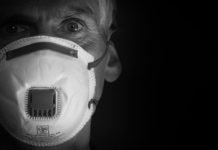The present study ” Mental health among people in high and low affected pandemic area during lockdown” aims at exploring the difference in the impact of lock down on mental health of people from Tamil Nadu and Kerala which is one of the low and high infected pandemic area respectively. The study was conducted by collecting data from 230 people in and around kerala (N=115) and Tamilnadu (N=115) using simple random sampling technique. The basic information was collected using socio demographic status profile. General Health Questionnaire (GHQ-12) was used to assess mental health among the people. The data was analyzed by standard statistical tool like t-test. The results indicated that there is no significant difference in mental health among people from Tamilnadu and Kerala due to lockdown.
“A complete state of physical, mental, and social well-being and not merely the absence of disease or infirmity” (World Health Organization, 1948)
Health is recognized to be an achievement involving balance among physical, mental and social well-being. Many use the term wellness to refer to this optimum state of health.
Living a healthy life means making lifestyle choices that support one’s physical, mental, spiritual, and emotional well-being. Managing one’s own health can be challenging at times; when one facet of wellness demands more attention than others, one may end up struggling to maintain a good balance. But to remain of sound body, mind, and spirit, it’s important to pay attention to all aspects of health: The mental, emotional, and spiritual sides all play a role in the physical welfare, and vice versa.
A state of optimal well-being means more than just the absence of disease or disorder; it also means having the resources to cope with problems and circumstances beyond one’s control and to recover from difficult or troubling situations. Actively focusing on this intersection between health and behavior can help prevent or at least delay chronic illness, and steer people to make better decisions about their well-being.
Health psychology, developed in the late 1970s, is its own domain of inquiry that examines the psychological and social factors that lead to the enhancement of health, the prevention and treatment of illness, and the evaluation and modification of health policies that influence health care.
A health psychologist, also called a medical psychologist, helps individuals explore the link between emotions and physical health.
Mental Health
Mental health is a state of mind characterized by emotional well-being, good behavioral adjustment, relative freedom from anxiety and disabling symptoms, and a capacity to establish constructive relationships and cope with the ordinary demands and stresses of life.
Mental health includes one’s emotional, psychological, and social well-being. It affects how one thinks, feels, and acts. It also helps in determining how one will handle stress, relate to others, and make choices. Mental health is important at every stage of life, from childhood and adolescence through adulthood.
Many factors that contribute to mental health problems, include the following :
- Biological factors, such as genes or brain chemistry
- Life experiences, such as trauma or abuse
- Family history of mental health problems
Mental health problems are common but help is available. People with mental health problems can get better and many recover completely.
Mental Health and Wellness
Positive mental health allows people to:
- Realize their full potential
- Cope with the stresses of life
- Work productively
- Make meaningful contributions to their communities
Ways to maintain positive mental health include:
- Getting professional help when one needs it
- Connecting with others
- Staying positive
- Getting physically active
- Helping others
- Getting enough sleep
- Developing coping skills
COVID-19 Pandemic
The coronavirus COVID-19 pandemic is the defining global health crisis of our time and the greatest challenge we have faced since World War II and is on a completely different scale compared to the earlier epidemics like Spanish flu, SARS, MERS, which have ravaged the world. It has shaken the entire world and has created a global panic. As COVID-19 initially creeps in and subsequently spreads at a galloping pace, it has been ravaging country after country. The pandemic has significant and variable psychological impacts in each country, depending on the stage of the pandemic. Since its emergence in Asia in the late 2019, the virus has spread to every continent except Antarctica.
Countries are racing to slow the spread of the virus by testing and treating patients, carrying out contact tracing, limiting travel, quarantining citizens, and cancelling large gatherings such as sporting events, concerts, and schools. The pandemic is moving like a wave—one that may yet crash on those least able to cope. But COVID-19 is much more than a health crisis. By stressing every one of the countries it touches, it has the potential to create devastating social, economic and political crises that will leave deep scars.
Dozens of the world’s greatest cities are deserted as people stay indoors, either by choice or by government order. Across the world, shops, theatres, restaurants and bars are closing.
Every day, people are losing jobs and income, with no way of knowing when normality will return. Small island nations, heavily dependent on tourism, have empty hotels and deserted beaches. One would have never imagined the stigma that might accompany COVID-19. There are several instances of people at risk, particularly health professionals being evicted from their premises by anxious landlords, people in quarantine being isolated from society, and cruel societal responses to people with a diagnosis of COVID-19, leading to people not disclosing symptoms and not seeking appropriate medical help.
Quarantine
A quarantine is a restriction on the movement of people and goods which is intended to prevent the spread of disease or pests. It is often used in connection to disease and illness, preventing the movement of those who may have been exposed to a communicable disease, but do not have a confirmed medical diagnosis. It is distinct from medical isolation, in which those confirmed to be infected with a communicable disease are isolated from the healthy population. Quarantine considerations are often one aspect of border control.
The concept of quarantine has been known since biblical times, and is known to have been practiced through history in various places. Notable quarantines in modern history include that of the village of Eyam in 1665 during the bubonic plague outbreak in England; East Samoa during the 1918 flu pandemic; the 1972 Yugoslav smallpox outbreak, and extensive quarantines applied throughout the world during the 2019–20 coronavirus pandemic which has proven to be a challenge to the humanity.
Social distancing, Social isolation and lockdown
To reduce the spread of COVID-19, many countries have imposed lock down, which is an emergency protocol that prevents people from leaving a given area. A full lockdown will mean one must stay where they are and should not exit or enter a building or the given area.
This scenario usually allows for essential supplies, grocery stores, pharmacies and banks to continue to serve the people with a new practice called social distancing where everyone is asked to maintain a distance of atleast 1 metre (3 feet), which is said to avoid the chances of one getting infected. All non-essential activities remain shut for the entire period.
The social distancing and lockdown have also led to several changes in day-to-day activities, redistribution of home chores, extensive working from home and greater time spent with those living together. Notwithstanding the importance of social distancing (although many prefer to use the term physical distancing), such a requirement has meant long separation from families (for those working away from their hometowns), financial stress and interpersonal strain. Reactions can range from boredom and moodiness to anger, irritation, and frustration. Another maladaptive coping is through the use of mind-altering substances. Uncertainty and a sense of loss of control are undoubtedly the pathogenic agents for anxiety, panic, and depression.
Precautions to be taken
- Maintaining social distances in public areas.
- Self isolating oneself, if not feeling well (coughing, sneezing, respiratory problems).
- Washing one’s hands regularly and thoroughly with soap and water or cleaning them using an alcohol-based because it kills viruses that may be on the hands.
- Touching eyes, nose and mouth should be avoided, bacause hands touch many surfaces and can pick up viruses. Once contaminated, hands can transfer the virus to eyes, nose or mouth. From there, the virus can enter into body and can make one sick.
- following good respiratory hygiene methods like covering the mouth and nose with the bent elbow or tissue when coughing or sneezing and then disposing the used tissue because Droplets spread virus.
These were some of the guidelines given by World Health Organization regarding the pandemic control.
Health Impact due to the pandemic and lockdown
New Delhi : The government’s apex biomedical research body has said the novel coronavirus-induced lockdown will have a long lasting impact on the health of the nation and that the travel bans currently in force are unlikely to have any effect in the short and medium term.
The observations by the Indian Council for Medical Research (ICMR) came at a time when the government was considering extending the 21-day lockdown. ICMR described lockdowns as a “drastic public health measure”.
Now the initial focus is necessarily on the physical consequences of the infection per se. However, there is recognition that the significant psychological consequences emerging out of this catastrophe need to be addressed. These could be arising out of direct consequences of infection or of restrictive measures imposed to curtail the spread of infection or the socio-economic impact of the pandemic. Some features are unique to psychological presentations related to disasters.
- First, the overlapping of psychological problems is very common. For example, anxious people may also have depression and drink alcohol to reduce anxiety and depression.
- Second, most people presenting with psychological disturbances are ‘normal people’ who have been overwhelmed by an extraordinary stressor.
- Third, a vast majority of people presenting with disaster-related psychological disturbances recover spontaneously over time or with brief psychological inputs.
Therefore, these presentations do not necessarily always amount to a psychiatric diagnosis. However, descriptions of psychological disturbances in particular domains help frontline personnel communicate and ensure appropriate selection of intervention.
Thus it is essential to ensure that mental health is integrated into the broad framework of COVID-19 health care response to ensure adequate and appropriate care to the many thousands who are psychologically disturbed following the pandemic.
In a review of the current evidence on covid-19, published in the latest issue of Indian Journal of Medical Research, ICMR said the experience of Wuhan, the Chinese epicenter of the pandemic showed that while the benefits of a lockdown remain to be seen, its long-lasting negative impact should not be underplayed.
Need for the study
In the current situation, pandemic COVID-19 is a threatening challenge all around the world in all aspects. The preventive measures taken like lockdown and quarantine has somehow reduced the infection, yet it has some serious implications in one’s physical, mental and social health. This study will help us understand the difference in the impact on mental health among people from a high and low affected pandemic area during lockdown.
METHODOLOGY
Objective
- To find the level of mental health among people in high affected pandemic area during lockdown.
- To find the level of mental health among people in low affected pandemic area during lockdown.
- To study the difference between the mental health among people in high and low affected pandemic area during lockdown.
Research question
The above-mentioned objectives have been based on the following research questions.
- What is the level of mental health among people in high affected pandemic area during lockdown?
- What is the level of mental health among people in low affected pandemic area during lockdown?
- Is there any significant difference between the level of mental health in high and low affected pandemic area during lockdown?
Hypothesis
- There is no significant difference in mental health among people in high and low affected pandemic area.
Area
The study was carried out among the people from in and around Tamil nadu and Kerala. The reason for choosing this area for the study is :
- Accessibility for the research.
- Because the case population in Tamil Nadu and Kerala represent a high and low pandemic hit area. The total cases in Tamilnadu and Kerala are 2162 and 495 respectively as of 30 April 2020, 4.35 am.
- The availability of the required participants for the study. (Inshorts app, 2020)
- The willingness and the cooperation of the participants to serve as subjects for the study.
Participants
In order to conduct the study, the data was collected from the people in Tamil nadu (N=115) and Kerala (N=115). 230 participants which consists of both male and female from both the states were selected by using simple random sampling method. The age of the group ranges from 17 to 56.
Tools
The following tools were used for data collection :
- Socio-demographic status profile: we developed the socio demographic status profile which was used for gathering basic information about the participants including age, gender, qualification, marital status.
- General health questionnaire- 12: The GHQ – 12 was constructed and standardized by Goldberg in the year 1972 to assess the level of mental distress. The scale consists of 12 likert type statements. The response to the items for participants have 4 point category.
Procedure
The participants were mailed with the forms, which consists of the socio demographic status profile and GHQ – 12. The forms included the following instructions, “The scale consists of 12 statements. Read each statement carefully and please indicate the choices that suits you the most by marking it”
Analysis of data
The data was analyzed using the SPSS software. The major statistical method used in this study involves “independent sample t-test”. The independent sample t-test was used to find out the influence of mental health variable on mainstream variables.
RESULT AND DISCUSSION
The study “Mental health among people in high and low affected pandemic area during lockdown” was conducted by collecting data by mailing the questionnaire. 230 participants which consists of both male and female from both the states were selected by using simple random sampling method. The age of the group ranges from 17 to 56. General Health Questionnaire (GHQ-12) was the tool used for this study. The results of the study are analyzed, tabulated and discussed below.
| S. NO | VARIABLE | N | PERCENT | |
| 1 | Age | 17-21 22-26 30-56 | 139 79 12 | 60.4 34.4 5.2 |
| 2 | Gender | Male Female | 76 154 | 33 67 |
| 3 | Occupation | Student Employed Unemployed | 173 41 16 | 75 18 7 |
| 4 | locality | Urban Rural | 115 115 | 50 50 |
| 5 | Marital status | Married Unmarried | 20 210 | 9 91 |
| 6 | Family type | Nuclear Family Joint family | 191 39 | 83 17 |
| 7 | Mental health in Kerala | Typical Evidence of distress Severe problems and psychological distress | 196 25 9 | 85 11 4 |
| 8 | Mental health in Tamil Nadu | Typical Evidence of distress Severe problems and psychological distress | 177 30 23 | 77 13 10 |
Table I shows the percentage value for the demographic data of the study. The percentage value for age group 17-21, 22-26, and 30-56 are 60.4%, 34.4% and 9.2% respectively. In gender, the percentage value for male is 33% and female is 67%. In occupation, 75% are students, 18% are employed and 7% are unemployed. The percentage value for urban and rural back ground is 50% and 59% respectively. The percentage of married is 9% and unmarried is 91%. In family type, the percentage value for nuclear family is 83% and joint family is 17%. In the category of mental health in Kerala 85% scored typical, 11% scored evidence of distress and 9% scored severe problems and psychological distress. In the category of mental health in Tamil Nadu 77% scored typical, 13% scored evidence of distress and 10% scored severe problems and psychological distress.
| Variable | Population | N | Mean | SD | t |
| Mental health | Tamil nadu | 115 | 1.19 | .494 | . 056 NS |
| Kerala | 115 | 1.34 | .661 |
From Table I, the mean scores of mental health for Tamil Nadu and Kerala are 1.19 and 1.34 respectively. The SD of mental health for Tamil Nadu and Kerala are .494 and .661 respectively. From the data it is clear that there is no difference in mental health in Tamil Nadu and Kerala. Thus the hypothesis stating “There is no significant difference in mental health among people in high and low affected pandemic area” is accepted. This might be due to the better coping skills, thus preventing an adverse impact on mental health. The gradual reduction of cases in highly populated pandemic area might also have facilitated this. The state and central government has taken many steps to make sure the people are safe from the pandemic thus reducing the burden on people which might have influenced the study.
SUMMARY AND CONCLUSION
The study on ” Mental health among people in high and low affected pandemic area during lockdown” was carried out with the following objectives.
- To find the level of mental health among people in high affected pandemic area during lockdown.
- To find the level of mental health among people in low affected pandemic area during lockdown.
- To study the difference between the mental health among people in high and low affected pandemic area during lockdown.
In order to conduct the study, the data was collected from the people in Tamil nadu and Kerala. 230 participants which consists of both male and female from both the states were selected by using simple random sampling method. The age of the group ranges from 17 to 56. General Health Questionnaire (GHQ-12) was used to assess the mental health among the people in Tamil nadu and Kerala.
Conclusion
- 50% of the participants were from Tamilnadu and other 50% were from Kerala.
- The difference in mental health between Tamil Nadu and Kerala is not significant. Hence the hypothesis “There is no significant difference in mental health among people in high and low affected pandemic area” is accepted.
Limitation
- No inclusion and Exclusion criteria were adopted.
- Misunderstanding of the respondents regarding the questions might have influenced the result.
Recommendation
- Study will be more accurate if it is done in a Experimental setting.
- Exclusion and Inclusion Criteria are to be adopted.
- Sample size is to be increased proportionately.
REFERENCES
- American Psychological Association. Mental health retrieved from. https://dictionary.apa.org/mental-health
- Canadian partnership for stroke Recovery. General Health Questionnaire-28. Retrieved from. https://www.strokeengine. Ca/en/indepth/general-health-questionnaire-28
- Coronavirus disease COVID 19 pandemic. Retrieved from https://www.undp.org/content undp/en/home/coronavirus.html.
- ET online (2020, March 25). What is India lockdown/ what a corona virus lockdown looks like? Retrieved from.https://m.economictimes.com/news-politics/corona-virus outbreak/74760719.cms
- Health/Psychology today. Retrieved from.https:// www.psychology today.com/us/basics/health.
- Johns Hopkins University (2020, April 30). COVID-19 map. Retrieved from.https://coronovirus.jhu.edu/map.html
- Mental health.gov (2019, May 04).What.is mental health? Retrieved from.https://www.mentalhealth.gov/ basics/what- is -mental- health.
- Taylor, S. E. (2015). Health Psychology. Ninth edition. McGraw-Hill Inc, New York.
- ThelmaCow (2020, April 25). Quarantine. Retrieved from. https:// en.wikipedia.org/ wiki/ quarantine.
- World Health Organization, (2020,March 31).coronovirus disease(COVID-19) advice for the public. Retrieved from. https://www.who.int/emergencies/diseases/novel-coronovirus-2019/advice-for-public























